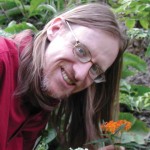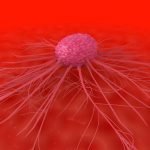Taxus brevifolia (Pacific yew) and Cancer
Eric Yarnell, ND, RD(AHG)
In 1963 the National Cancer Institute found that extracts of Taxus brevifolia (Pacific yew) bark were active in vitro against cancer cells. A sample was sent to researcher Monroe Wall, PhD, in North Carolina to follow up. Wall and associates confirmed that crude extracts were effectives against various types of cancer cell lines, and proceeded to isolate the taxane diterpenoid paclitaxel. While paclitaxel eventually (30+ years later) ended up as an FDA approved chemotherapy drug named Taxol®, what the researchers did not follow-up on is the fact that crude extracts are also effective, not just the isolated drug. Once again herbal medicine had been overlooked and turned into pharmaceutical medicine, ignoring the potential of multiconstituent approaches to health.
This dilemma is not new in natural medicine. Another classic example, discussed in a previous issue of ND News & Review, is Catharanthus roseus (Madagascar periwinkle), the source of the drugs vincristine and vinblastine, also shown to be active against cancer cells in crude extracts.
Synergy in Pacific Yew
Given that the concentration of paclitaxel in Pacific yew bark is around 0.02%, and in the needles 0.033%, it is highly unlikely that crude Pacific yew extracts work solely because of the content of this constituent. Taxinine, isolated from Taxus cuspidate but found in Pacific yew, has been shown to inhibit the multidrug resistance (MDR) pump in cancer cells, and thus might augment the activity of paclitaxel. Lignans, especially taxiresinol 1, from T. wallichiana have shown strong anticancer activity in vitro as well, suggesting another set of constituents that could act in concert with paclitaxel. Other diterpenoids from T. yunnanensis and T. chinensis, closely related to paclitaxel, have shown anticancer activity in vitro (even against multidrug resistant cell lines), as has one flavonoid.
This leads to the conclusion that multiple constituents in various species of yew have actions that may be additive or even synergistic—admittedly, whether the concentrations delivered to a human would be sufficient after oral or other routes of administration has not yet been investigated. Additionally, these constituents seem to have properties that reduce the potential for developing resistance. It seems the logical approach would to be to develop an extract containing the most effective combination of constituents rather than a single drug. Of course, this is only logical if one ignores the misguided economic incentives that have defined the drug culture.
Pacific Yew: Who Profits?
Pacific yew is an indigenous resource of the Pacific Northwest. It has been noted that though research on Pacific yew began in government laboratories and were heavily subsidized by government funds throughout the development process, ultimately the profits from the drug Taxol® have gone to private interests. These private interests have seen fit to decimate wild populations of Pacific yew by overharvesting them for their bark, failing from step one to consider other methods of utilization, including the fact that renewable needles contain significantly higher quantities of paclitaxel. The drug companies selling Taxol® earn handsome profits while charging outrageous prices to patients, many of whom end up declaring bankruptcy due to insurmountable medical bills.
It is time for naturopathic physicians to reclaim this natural resource and perform the clinical trials necessary to prove that a crude extract of Pacific yew is beneficial for people with cancer (particularly when combined with a complete natural treatment protocol involving multiple herbs, nutrients, lifestyle changes, and other treatments).
Clinically this author and many others have witnessed the above effects of crude extract Pacific Yew, but such anecdotes are only the beginning of a research agenda. Present patent laws and a culture obsessed with magic bullet cures mean that almost all the money supports a medical system that is leading us ever further down a high-technology path that maintains people in a diseased state. It is the job of those outside this system to use what resources are available to turn us toward a different path, one in which the health of the patient is paramount, not the stock price of the drug company.
The Ecological Imperative
The present approach of extracting tiny amounts of paclitaxel from Pacific yew or other yew species is unsustainable. It takes the bark of three trees to obtain just 1-2 g of paclitaxel, the necessary dose per patient. While using needles would reduce this ratio to one tree per patient dose, it would still require fairly vast destruction to maintain drug production. The naturopathic approach of using crude extracts of the needles may use less raw material in a more sustainable fashion, particularly when combined with other therapies, further limiting the necessary amount of any one treatment. Thus naturopathic physicians have yet another reason to push a different research agenda in use of herbs to treat cancer—protection of the environment.
Another approach is to use tissue cultures of yew to obtain active compounds. One study in China on T. chinensis found that crude extracts of such a culture were active against cancer cells. This also supports the contention, once again, that crude extracts have potential activity in human cancer patients, not just isolated compounds.
Clinical Use of Pacific Yew
While awaiting the development of a research program to determine effective use of crude herbs for cancer patients, some clinicians have found that a tincture of the needles of Pacific yew (60% or more ethanol, as taxanes are not water soluble, 1:5 weight:volume) at a dose of 3-10 drops three times per day can be helpful in adult cancer patients. Pacific yew should always be combined with other antineoplastic, immunomodulating, and related treatments to maximize efficacy.
To date no adverse effects have been observed at this dose. Toxicological reports suggest that it takes several handfuls of needles to seriously harm adult humans. Early signs and symptoms of toxicity include nausea, vomiting, mydriasis, and abdominal pain. Onset of arrhythmias or neuropathies suggest advanced and severe overdose, and could lead to death.
References
Appendino G (1993) “Taxol. Historic and ecological aspects” Fitoterapia 64(suppl 1): 5-25.
Bai J, Kitabatake M, Toyoizumi K, et al. (2004) “Production of biologically active taxoids by a callus culture of Taxus cuspidata” J Nat Prod 67(1):58-63.
Chattopadhyay SK, Kumar TR, Maulik PR, et al. (2003) “Absolute configuration and anticancer activity of taxiresinol and related lignans of Taxus wallichiana”Bioorg Med Chem 11(23):4945-8.
Kingston AD (1993) “Taxol, an exciting anticancer drug from Taxus brevifolia: An overview” In: Kinghorn AD, Balandrin MF (eds) Human Medicinal Agents from Plants (Washington, DC: American Chemical Society):138-48.
Lu C, Mei X (2003) “Study on anti-tumor activity of extracts from cultured cells of Taxus chinensis” Zhong Yao Cai 26(5):335-7.
Pacific Yew: Draft Environmental Impact Statement. Appendices. U.S. Departments of Agriculture, Interior, and Health and Human Services. January 1993.
Shinozaki Y, Fukamiya N, Uchiyama C, et al. (2002) “Multidrug resistant cancer cells susceptibility to cytotoxic taxane diterpenes from Taxus yunnanensis and Taxus chinensis” Bioorg Med Chem Lett 12(19):2785-8.
Walsh V, Goodman J (2002) “From taxol to Taxol: the changing identities and ownership of an anti-cancer drug” Med Anthropol 21(3-4):307-36.
 Eric Yarnell, ND, RH is a graduate of Bastyr University. He completed a two-year residency with Silena Heron, ND, and served as chair of botanical medicine at SCNM. He is past senior editor of the Journal of Naturopathic Medicine. Dr. Yarnell is a founding member and current president of the Botanical Medicine Academy and author of numerous textbooks and articles, including Naturopathic Urology andMen’s Health, Naturopathic Gastroenterology and Clinical Botanical Medicine. His area of clinical focus is urology and men’s health. He is assistant professor in botanical medicine at Bastyr University.
Eric Yarnell, ND, RH is a graduate of Bastyr University. He completed a two-year residency with Silena Heron, ND, and served as chair of botanical medicine at SCNM. He is past senior editor of the Journal of Naturopathic Medicine. Dr. Yarnell is a founding member and current president of the Botanical Medicine Academy and author of numerous textbooks and articles, including Naturopathic Urology andMen’s Health, Naturopathic Gastroenterology and Clinical Botanical Medicine. His area of clinical focus is urology and men’s health. He is assistant professor in botanical medicine at Bastyr University.









